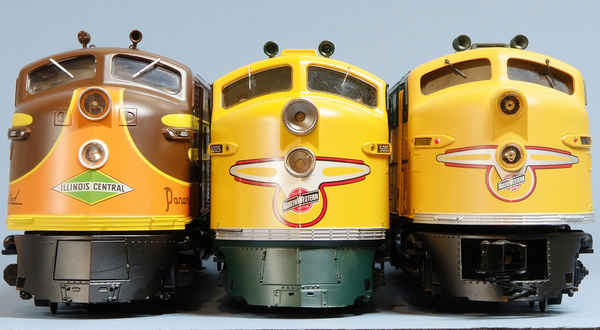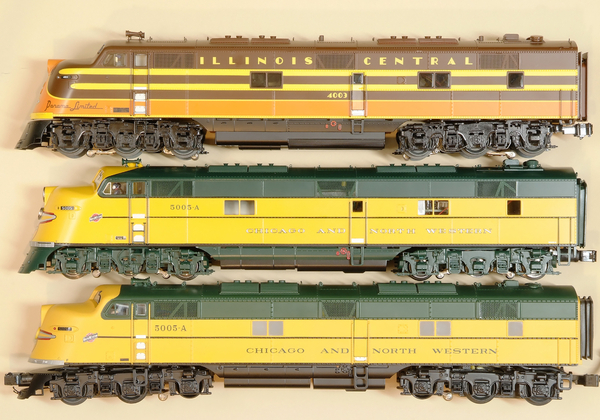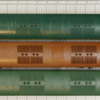Due to some recent inaccurate information by another forum member regarding the current offerings of the E6 diesel units on the market, I wanted to see for myself and also point out some of the corrections as well as give everyone a fact based opportunity to check out the differences among the three manufactures, Sunset 3rd Rail, MTH and Lionel. This boarders on rivet counting so if that bothers you please read no further.
This also allowed me to notice some differences I had not seen before. Please note, I am not comparing the decoration or mechanicals, just the body/shell. Also, it should be noted that the manufacturing dates span almost 15 years from oldest to newest.
First up is the real reason for the comparison. The length of the Lionel was questioned as being too short and the MTH “spot on”. In fact, the original comment was that the MTH was “noticeably longer”.
The two images below visually show that the claimed information was not only wrong, but actually wrong in the opposite direction… Not sure how he came to that conclusion ???
Since I have no way to show the measurements from coupler face to coupler face, I lined up the front of the pilots in the first image. The next image I lined up the end of the car bodies. For reference the prototype length is 70’ 4”, which comes out to 17.57 if I did my math correctly.
Top: Sunset 3rd Rail, Middle: Lionel, Bottom: MTH
This top down view really shows the nose contours and the difference all three have. Which is most correct, I will let you decide, but one area that is completely wrong is the wind shield on the Lionel compared to the other. The Lionel brow for the most part is almost straight across. The MTH and 3rd rail captured this element better, but which is more correct?
As for the contour of the nose, again, all three are different. Obviously, the pilot is obscured by the coupler on the MTH, but it is closer to the Lionel in shape, coming to a more obvious point compared to the 3rd Rail E6. From my research it looks like the 3rd Rail got closest to the contour of the E6 from the top.
Now we have two images of the nose from head on and side. The 3rd Rail version is a fixed pilot verses Lionel and MTH having a swinging pilot which can be seen in the “gap” of each unit. This was another interesting view as you can clearly see differences in how each manufacture executed the body height. One element that stands out to me was how the headlight and the body work just below the headlight were represented. In this case, the Lionel was the most accurate which also shows up in the front “rake”, the classic E6 aggressive look is almost a straight line from the pilot to the top of the headlight. Someone may want to research, but I am not sure if different pilots were available and if so, did the pilot effect the shape of the “rake”. Also clearly seen is the windshield size. The MTH is very small compared to the Lionel and 3rd rail, almost like the postwar F3’s - squinty windshields.
From the side, you can see that all got the front “rake” pretty close. From this position, the 3rd Rail is closest to the camera the Lionel next and the MTH furthest.
Lastly is the whole side view. The element that was most notable was the shallow fuel tank of the MTH. I think this would be an easy fix, but when the engines are lined up on the track and you are viewing from a low angle, it is pretty obvious. There are some other obvious difference that can be seen in this view, but each person will have to decide what is or what is not important to them. I do like how the 3rd trucks are “tucked up” tight to the body. The goofy side body windows on the MTH are easily fixed and the Lionel trucks appear to be shorter than the 3rd Rail and MTH, which leaves a bit of a gap toward the back. Again, which one is correct? Without measuring, it would appear the MTH and 3rd rail, but someone can research that.
I have said in the past, accurate bodies without accurate paint and decorating ruins the whole look for me. I can accept slight body compromises with my toys, but not the deco. Of course, we would all like to have accurate bodies WITH accurate paint, but that seems to be pretty elusive in O.
So… which is “spot on”? None of them which you can see in the images, but for my purposes, all have pros and cons which we all need to take into consideration for our own needs/likes.
Charlie




























